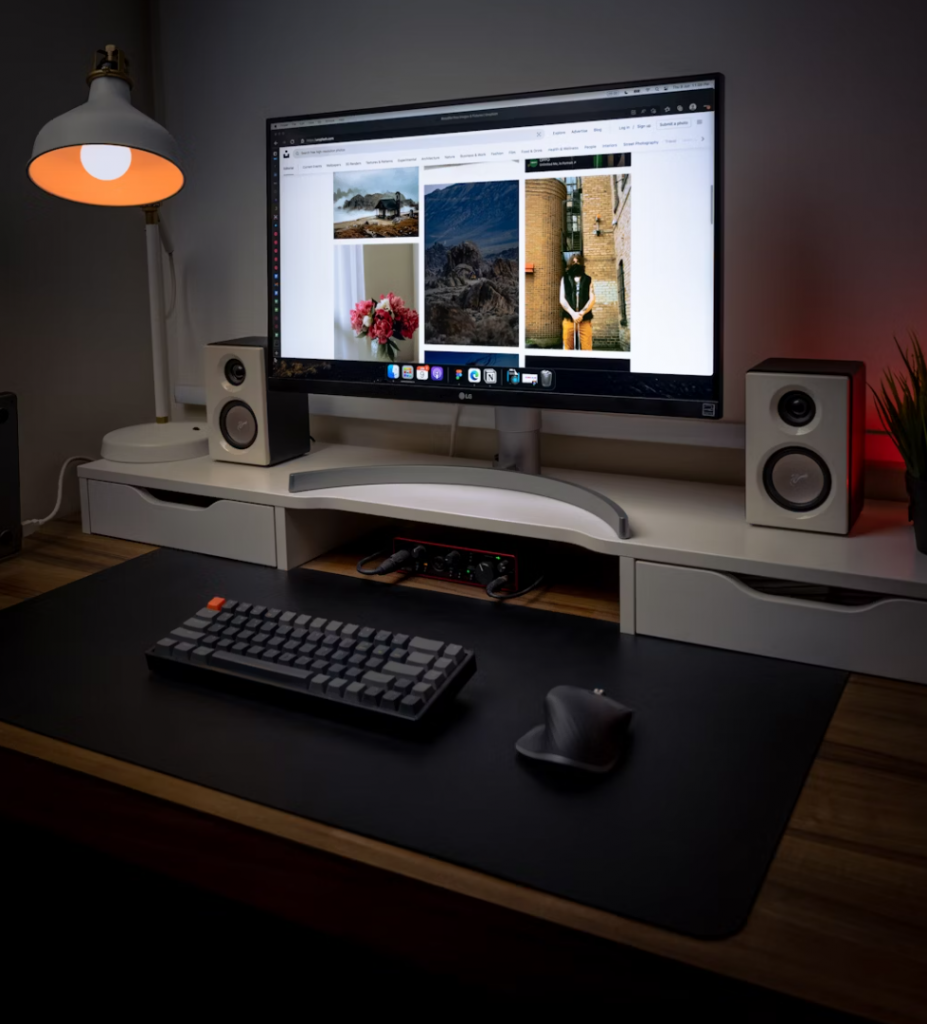Introduction to Ergonomic Wireless Combos
Let’s face it—many of us spend over 8 hours a day in front of a computer. If you’re using a basic keyboard and mouse, chances are your hands, wrists, or back have already sent you some distress signals. That’s where ergonomic wireless combos come into play. These intelligently designed tools do more than just look cool; they can revolutionize your work comfort and prevent long-term strain.

Why Ergonomics Matter in Today’s Workspaces
Preventing Long-Term Injuries
Carpal tunnel, tendonitis, shoulder pain—these aren’t just medical jargon, they’re real consequences of poor workstation ergonomics. Repetitive motions with non-ergonomic tools can silently wear down your muscles and nerves.
Boosting Productivity with Comfort
A comfortable workspace is a productive workspace. When your hands are supported and your wrists rest naturally, your focus shifts from adjusting your position to accomplishing tasks faster and more effectively.
Key Features of an Ergonomic Mouse and Keyboard Combo
Split Keyboards and Natural Hand Position
A split keyboard encourages your arms to rest at shoulder width, helping you avoid the hunched-in “T-Rex” posture. This design also encourages a more natural wrist angle.
Contoured Mice and Adjustable DPI
Ergonomic mice often feature sculpted designs that cradle your hand. Adjustable DPI (dots per inch) lets you control cursor speed without moving your wrist too much—a small tweak that saves major effort.
Wrist Support and Padding
Look for combos that include cushioned wrist rests or sloped keyboard designs. These features reduce pressure and keep your hands in a neutral zone.
Top 5 Ergonomic Wireless Combos Reviewed
Logitech MX Keys Combo for Business
Key Features
- Backlit keyboard with smart illumination
- MX Master 3 mouse with ergonomic design and customizable buttons
- USB-C rechargeable
- Works across multiple devices
Pros and Cons
Pros: Exceptional build quality, seamless multi-device support, advanced ergonomics.
Cons: Premium price tag; may be overkill for casual users.
Microsoft Sculpt Ergonomic Desktop
Key Features
- Split keyboard layout with domed design
- Separate number pad
- Thumb scoop mouse for natural hand positioning
Pros and Cons
Pros: Great wrist support, intuitive layout, especially for Windows users.
Cons: Non-rechargeable; larger footprint may not fit compact desks.
Logitech Ergo K860 and MX Vertical Bundle
Key Features
- Curved keyboard with negative tilt
- MX Vertical Mouse encourages handshake posture
- Long battery life and quiet keys
Pros and Cons
Pros: Ultra-comfortable typing and mousing, excellent for posture.
Cons: Slight learning curve due to vertical mouse shape.
Kensington Pro Fit Ergo Wireless Combo
Key Features
- Spill-proof design
- Adjustable tilt keyboard
- Medium-size contoured mouse
Pros and Cons
Pros: Budget-friendly with decent ergonomics, plug-and-play simplicity.
Cons: Lacks premium features like backlighting and high DPI mouse.
Perixx Periduo-605 Wireless Ergonomic Combo
Key Features
- Affordable split keyboard with wrist rest
- Vertical mouse with adjustable DPI
- Quiet membrane keys
Pros and Cons
Pros: Great value, solid ergonomic basics, compact design.
Cons: Basic build quality, no backlighting.
How to Choose the Right Combo for Your Setup
Matching Your Desk Layout and Usage Patterns
Before purchasing, assess your desk space and how you work. If you use dual monitors and frequently multitask, a mouse with side buttons and a keyboard with media controls may be essential.
Budget vs. Premium Options
Don’t assume higher price always means better. While Logitech’s premium combos deliver unmatched comfort and features, there are affordable ergonomic sets that provide 80% of the value at half the cost.
Wireless Technology: Bluetooth vs. USB Dongle
Latency and Connection Stability
Bluetooth is more flexible, especially for mobile setups. However, USB dongles often offer lower latency and stronger connections—ideal for demanding tasks like design or editing.
Battery Life Considerations
Check if the devices are rechargeable or require disposable batteries. Some ergonomic combos like Logitech’s last up to 10 days on a single charge with heavy use.
Tips for Maximizing Ergonomic Benefits
Proper Posture and Desk Setup
Even the best combo won’t help if you’re slouching. Keep your monitor at eye level, elbows at 90 degrees, and wrists flat. A good chair and desk combo amplify ergonomic results.
Break Intervals and Hand Exercises
Don’t forget the human part of the equation. Set a timer to stretch every hour and do wrist rotations or finger spreads to reduce tension and boost circulation.
Final Thoughts
Investing in a high-quality ergonomic wireless mouse and keyboard combo is more than a tech upgrade—it’s an upgrade to your health, focus, and workflow. Whether you’re coding, writing, designing, or simply typing emails, your hands deserve better tools. Choose smart, work comfortably, and protect yourself from the pitfalls of poor posture.
FAQs
1. Are ergonomic keyboard and mouse combos really worth the price?
Yes. The long-term health benefits and productivity boosts far outweigh the initial investment.
2. What’s better: a vertical mouse or a traditional one for ergonomics?
A vertical mouse promotes a handshake position, which is more natural and reduces wrist strain.
3. Can I use ergonomic wireless combos with Mac?
Most combos support both Windows and macOS. Always double-check compatibility before purchase.
4. Do ergonomic keyboards slow down typing speed?
Initially, maybe. But with practice, users often regain and surpass their original speed with better comfort.
5. How long do the batteries last in these wireless combos?
It varies. Rechargeable models like the Logitech MX series can last up to 10 days per charge, while battery-powered ones may last several months.

